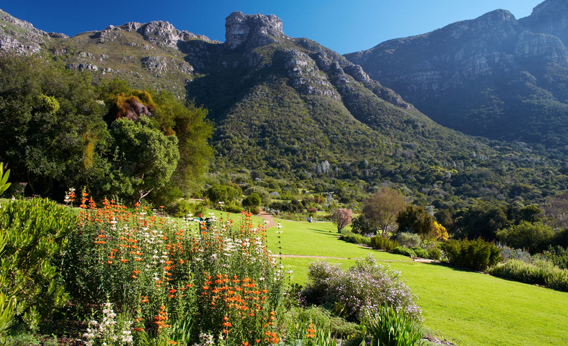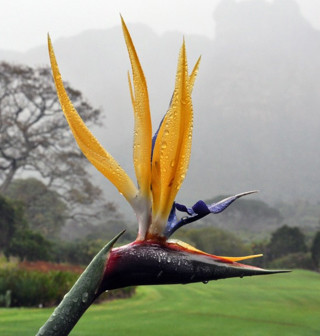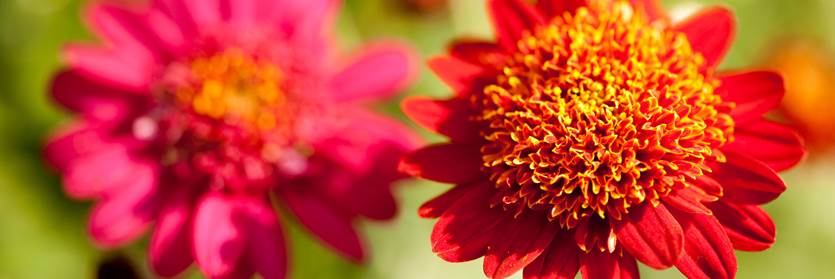Tales from South Africa’s Kirstenbosch
Posted in Adult Education on February 18 2014, by Sonia Uyterhoeven
Sonia Uyterhoeven is the NYBG‘s Gardener for Public Education.

At the end of January, our 14th Annual Winter Lecture Series kicked off with the first of three presentations as given by Brian Huntley, emeritus professor, renowned conservation scientist, and former CEO of the South African National Biodiversity Institute (SANBI). Huntley was instrumental in shaping South Africa’s most famous garden, Kirstenbosch, from the ’90s and into the ’00s, and was a key figure in post-apartheid conservation across South Africa.
The Cape Floral Kingdom populating Kirstenbosch is incredibly diverse and unique, full of color and contrast. The poster child of South African flora is the protea (Proteaceae). As the country’s national flower, it has since become a huge success in the cut flower trade worldwide, but apart from this iconic South African plant, the country is also famous for its unique collection of geophytes (bulbs of all colors and shapes), irises (Iridaceae), heathers (Ericaceae), and a variety of colorful succulents and grass-like restios (Restionaceae). A few of the internationally-known plants from this region are the ubiquitous geranium (Pelargonium), the Kaffir lily (Clivia), African lily (Agapanthus), and gladiolus (Gladiolus).
I arrived at the lecture expecting to be captivated by the many South African floral treasures discussed by Professor Huntley, but even I couldn’t anticipate such beauty. I further came away with a profound appreciation of the country’s botanical history. Huntley intertwined the famous flora of South Africa with stories of conservation efforts and a history of their premier botanical garden—Kirstenbosch. His leadership was clear as he provided us with a vivid history, mission, and vision of the famed garden.
Kirstenbosch’s history began with the imperial efforts of the Dutch and British sending botanists and naturalists to explore the area, collect plants, and return home with their finds. The British eventually took the lead in the establishment of a botanical garden on the South African Cape, sending Cambridge botanists down to create a “South African Kew.”
From the establishment of Kirstenbosch in 1913, Huntley jumped forward to the 1990s, when his tenure at the botanical garden began and the abolition of apartheid set changes in motion throughout South Africa. SANBI was formed and a large biodiversity network was created. Huntley demonstrated this progression with photographs of the garden’s curators, from the 1970s to the present day. Diversity was the hallmark of change, with photos through the years graduating into a more accurate demographic representation of South Africa.

Nelson Mandela attended the opening of the Children’s Garden at Kirstenbosch, and while the garden had traditionally attracted a middle-class, middle-aged crowd of European descent, the new energy of the garden was focused on inspiration, education, and transformation. Attracting a wider audience was an important part of this mission, and Kirstenbosch now owns a colorful school bus painted with flowers and bright colors, regularly shuttling school kids in from outer townships for programs at the garden.
Later on, Huntley relayed a funny story about naming a plant in Nelson Mandela’s honor. Someone from an outside organization had suggested a plant that was a member of the oxalis or wood-sorrel family. While it was endemic to South Africa, and could be found throughout the country, it had a weedy growth habit and the staff at Kirstenbosch scurried about in search of a better alternative—one better suited for the stature of the honoree. Their choice was a golden bird of paradise (Strelitzia reginae) which they called ‘Mandela’s Gold’.
With regards to conservation in the country, Huntley told the story of Erica verticillata, a beautiful heath that had been indigenous to the Cape but became locally extinct. Botanists searched in earnest for this plant, finally uncovering several specimens around the world—some in Vienna, at the Schönbrunn and Belvedere Palace Gardens, a few at Kew, and some in a park in South Africa’s capital, Pretoria. The Viennese heaths were believed to date back to a collecting expedition from 1799. Erica verticillata grows very well in cultivation and is now being reintroduced into its natural environment where it is frequented by its eye-catching pollinator, the sunbird.

The former director told us that Kirstenbosch runs at a profit, as well: 45% of its revenue comes from the gate, 20% from rentals and restaurants, and a whopping 35% from concerts. Every Sunday for a period of nine months, the botanic gardens open the gates to concertgoers, inviting them into a beautiful amphitheater that has been built for this very purpose. Concerts range from local groups to superstars such as Elton John.
After the lecture, I asked Huntley how the lawn fared with up to 10,000 music lovers coming and going on Sundays. He said Kirstenbosch uses a blend of South African turf grasses that is very durable. But the biggest surprise was when he told me that they don’t put out trash receptacles in the garden. The policy is that whatever you bring in, you take out. After thousands of concertgoers come to picnic and enjoy music, the leave behind a spotless garden.
Huntley ended his lecture with a bang, giving the audience nine good pointers for creating successful public gardens. His advice was as follows:
1. Make sure the garden is easy to get to.
2. Set big, bold long-term challenges.
3. Share your vision through mutually beneficial partnerships.
4. Practice “strategic opportunism”; have a plan for success but don’t think in a linear fashion—do things as they arise.
5. Create exciting projects—donors will back you.
6. Make sure your timing is good.
7. Align your programs with government policy and socially relevant issues.
8. Build lasting friendships with sponsors, corporations, the public, etc.
9. Do everything with passion.
Join us for our second winter lecture on February 20th, from 10 a.m. to 12 p.m. in the Ross Hall, when acclaimed landscape architect Kim Wilkie discusses his work sculpting landforms into majestic gardens. His lecture promises to take us on a journey from stately British homes and large estates to small urban spaces, where his craft translates just as well.

